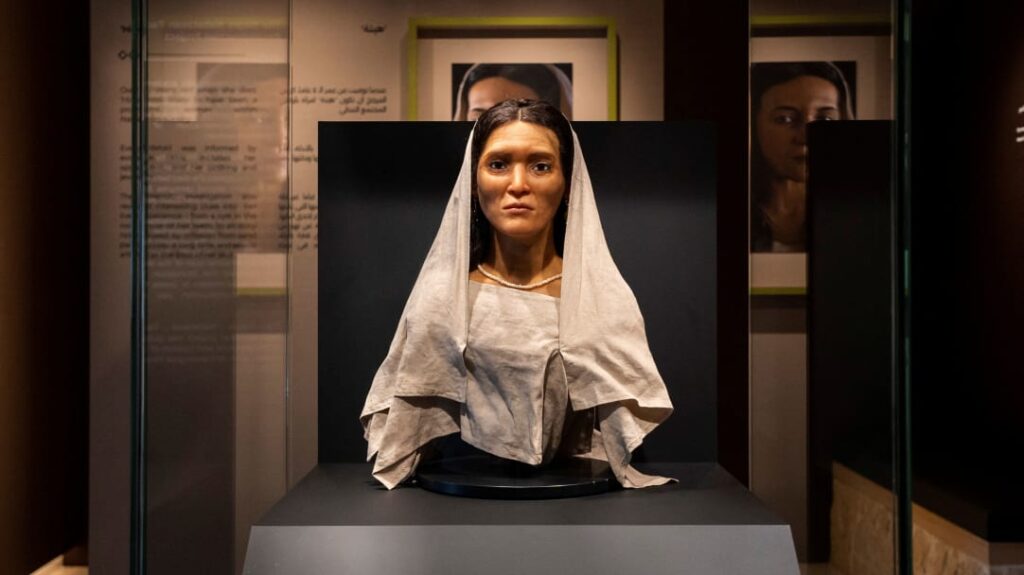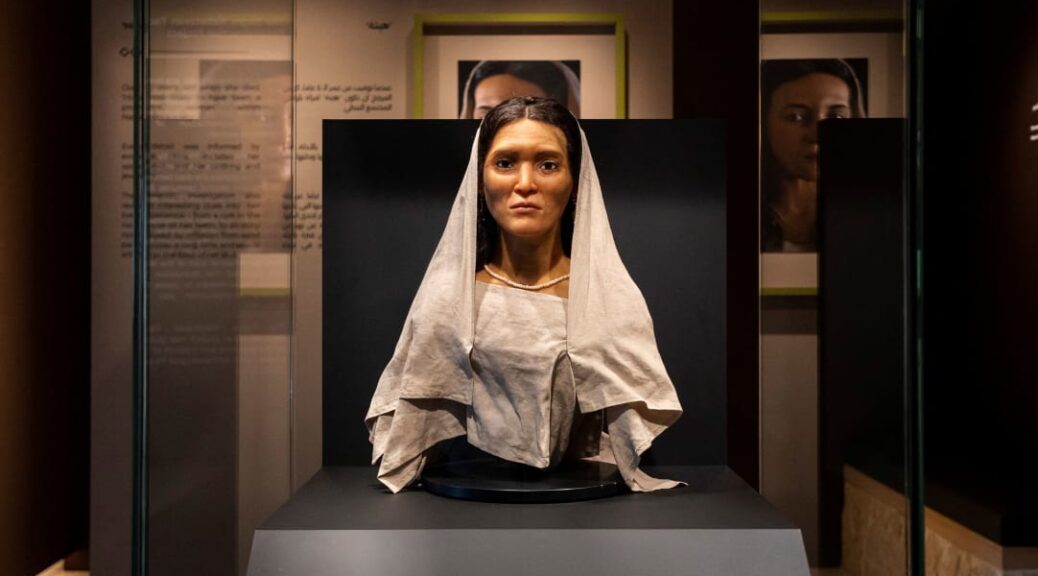Saudi Arabia unveils reconstructed face of a 2000-year-old Nabataean woman

Saudi Arabia is unveiling a reconstruction of the face of an ancient Nabataean woman after several years of work by historians and archaeologists.
The reconstruction, which is the first of its kind, is modeled on the remains of Hinat, a Nabataean woman who was discovered in 2015 in a 2,000-year-old tomb in Hegra, an archaeological site located in the ancient oasis city AlUla, northwestern Saudi Arabia.
Funded by the Royal Commission for AlUla, the reconstruction of Hinat began in the United Kingdom in 2019.
A multidisciplinary team of experts rebuilt bone fragments found in the tomb to reconstruct an image of her appearance using anthropological and archaeological data. A sculptor then used a 3D printer to bring her face to life.
The Nabataeans were an ancient Arab civilization that inhabited northern Arabia and the Levant over 2,000 years ago. The ancient Jordanian city of Petra was the capital of their kingdom, which became a vibrant and commercial international trading hub for spices, medicine and fabric, facilitated by the Nabataeans.

Starting Monday, history buffs will have the opportunity to meet Hinat on display at the Hegra welcome center in AlUla.
Once a thriving hub for international trade and home to the Nabataeans, Hegra, a UNESCO World Heritage site, was opened in 2020 as a tourist site.
The Nabataean civilization didn’t leave significant historical texts, and information about it comes from inscriptions on tombs and on rocks throughout the Middle East, or from archaeological discoveries.
“The Nabataeans are a bit of a mystery: We know a lot, but at the same time we know very little because they didn’t leave any literary texts or records,” Lebanese-French archeologist Laila Nehme, the director of the project, told National Geographic. “Excavating this tomb was a wonderful opportunity to learn more about their idea of the afterlife.”
According to Nehme, the Nabataeans’ alphabet evolved into modern-day Arabic.
“This tomb has a very nice inscription carved on its facade, which says it belonged to a woman called Hinat,” added Nehme.
But not everyone believes this historical breakthrough is necessarily an accurate representation of the ancient Nabataeans.
Laurence Hapiot, an archaeologist at the King Abdullah University of Science and Technology in Saudi Arabia, tweeted that “there is still some non-scientific interpretation in face reconstruction.”
The AlUla Royal Commission didn’t respond to CNN’s request for comment.
SOURCE: https://edition.cnn.com/
